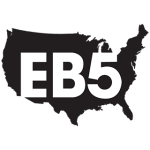
Those in the EB-5 investment community have faced their fair share of challenges throughout the late 2010s and into the 2020s, including a global pandemic, but as the world begins to open up after COVID-19, the EB-5 world is being confronted with more hardships. Most pressingly, the looming sunset date of June 30, 2021, on which the EB-5 Regional Center Program has been slated to expire, is hurtling toward us, and many see EB-5 reform as the only path to salvation. Another problem in the EB-5 investment program—one that has been around since November 2019—is the new regulations enacted with the Modernization Rule, which restricted the definition of targeted employment areas (TEAs) and increased the minimum required investment amounts by 80%.
Indeed, these new rules have not been popular among EB5 investment stakeholders such as investors, developers, and regional center operators. But while most adjusted—by either making a larger EB-5 investment, tweaking the location of their project, or shifting their business model to accommodate the legislative changes—the Behring Regional Center in California and Florida EB5 Investments LLC in Florida chose to file lawsuits.
Lawsuits Against the EB-5 Modernization Rule
Filing suit simply because new regulations invalidate your business model will hardly get a regional center anywhere, especially when so many of their peers have adjusted to the changes and continue to run successful businesses. But the lawsuits do have a legitimate legal grounding. They target what the plaintiffs see as illegal finalization of the regulations, requesting the courts to vacate the rules and allow the EB-5 program to revert back to the former legislation.
When Florida EB5 Investments LLC took their case to court, they lost their motion for injunctive relief, which would halt the regulations, at least until a decision was reached on the case. As of June 2021, the courts are still adjudicating the regional center’s claim of “illegal finalization,” but until a decision is reached, the rules will stay in place.
So the Behring Regional Center jumped in, filing the same lawsuit in a different court. This time, the court was more open to the plaintiff’s arguments. The court did not grant injunctive relief during the adjudication period, but the judge did, with the plaintiff’s permission, switched the motion to a summary judgment. Under these circumstances, whatever the judge rules determines the future of the Modernization Rule regulations: if the government wins, they stay, but if the plaintiff wins, they go. And with the court requesting the government to provide suggestions for possible remedies, many in the EB-5 investment world jumped to conclusions about how the judge would rule. Rumors abounded that the Modernization Rule regulations would be overturned and the $500,000 and $1,000,000 EB5 investment amounts would be back.
Mayorkas’s Interjection
Unfortunately, the case is not that simple. For one thing, there has yet to be an official ruling, and legal cases tend not to be quick. For another, the government is clearly in favor of the updated regulations.
The plaintiff’s argument rests on the idea that the Department of Homeland Security (DHS) did not have a Senate-confirmed secretary at the time the legislation was ratified. The rationale is that the person who ratified the regulations was an “acting secretary,” not a Senate-confirmed one, and the law states that actions taken by an acting secretary may not be ratified. The argument further claims that at the time of ratification, the “acting secretary” position was not filled by the person who was next in line to fill it, invalidating the position entirely.
So, what did the newly Senate-confirmed head of DHS, Alejandro Mayorkas, do in response to the lawsuit? He simply ratified the regulations, throwing an unexpected wrench into the case. And in response to this sudden plot twist, the Behring Regional Center’s lawyers, in turn, filed a pleading in which they claimed the government cannot protect the regulations retroactively to shut down the lawsuit. As of June 16, 2021, the court has yet to issue a ruling on this pleading.
The EB-5 Regional Center Program Reauthorization Conundrum
While many EB-5 investment stakeholders would be thrilled to see the Modernization Rule regulations overturned, most are focusing their attention on the looming sunset date of the EB-5 Regional Center Program. As the window to act gets ever smaller, the EB-5 community is increasingly embracing the EB-5 Reform and Integrity Act—as imperfect as it may be—as a key tool to procure reauthorization for the regional center program, the lifeblood of the EB-5 program. And that’s why the Behring Regional Center’s controversial lawsuit seems so strange—under circumstances where the very regional center program itself is under existential threat, this particular regional center continues to push forward with a lawsuit to overturn previously enacted rules. The lawsuit would have no impact on the standing of EB-5 Regional Center Program reauthorization—the efforts seem misplaced during this period of EB-5 crisis.
